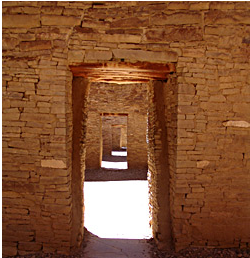Publication Date
5-1-2013
Abstract
The cultural and human biological outcomes of Spanish colonization of the Americas were diverse. This dissertation examines the effects of Spanish colonization on Maya social structure using skeletal evidence for the distribution of labor at Tipu, a mission site in west central Belize. Skeletal remains of indigenous Maya buried in the context of a church, and in accordance with European Catholic burial customs, were examined for enthesis development and the cross-sectional morphology (CSG) of upper and lower limb long bones. Nothing besides burial placement in relation to the church (inside or outside the walls) denotes social status among individuals. Bone functional adaptations were used to examine the distribution of labor at Tipu and determine whether activity patterns varied by burial placement, and therefore social status. The bone functional adaptations of samples of pre-contact Maya elite and non-elites were also examined to determine whether the activity patterns of high and low status individuals at Tipu varied in the same way as those of Classic/Postclassic Maya of different social tiers. A 3D laser scanner was used to measure the surface areas of entheses on the humerus, radius and ulna, as well as CSG of the humerus (at 35% of length), femur and tibia (at midshaft). Detailed in this dissertation are: 1) a pilot study testing the reliability of the new 3D method for quantifying enthesis development, 2) an investigation of the distribution of labor at Tipu using entheses as indicators of habitual upper limb muscle use, and 3) an investigation of labor distribution at Tipu using CSG as indication of habitual upper limb use and mobility patterns. The pilot study presented in Chapter 2 supports the use of the 3D method for quantifying enthesis development. Chapters 3 and 4 demonstrate that both patterns of enthesis development and CSG at Tipu suggest Maya social structure changed with missionization. The activity patterns of high and low status individuals did not replicate those of pre-contact elites and non-elites. In general, the activity patterns of Tipuans of different social status were more similar. There were no drastic differences in the bone functional adaptations of inside and outside burial groups. However, some notable exceptions to this finding in both enthesis development and CSG suggest there may have been some task specialization among higher status Tipu men and women.
Keywords
Spanish colonization, Maya, entheses, cross-sectional geometry, 3D scanning technology
Project Sponsors
Dean's Dissertation Fellowship, Office of Graduate Studies, University of New Mexico's Anthropology Department
Document Type
Dissertation
Language
English
Degree Name
Anthropology
Level of Degree
Doctoral
Department Name
Anthropology
First Committee Member (Chair)
Heather Edgar
Second Committee Member
Osbjourn M. Pearson
Third Committee Member
Keith Prufer
Fourth Committee Member
Gabriel Wrobel
Recommended Citation
Noldner, Lara Kristen. "Spanish Missionization and Maya Social Structure: Skeletal Evidence for Labor Distribution at Tipu, Belize." (2013). https://digitalrepository.unm.edu/anth_etds/48

